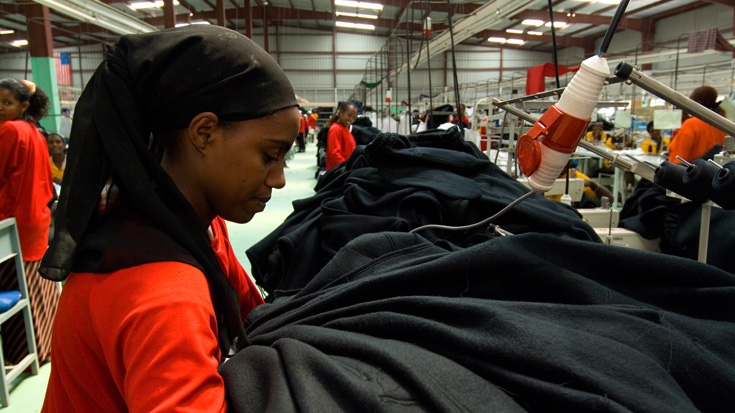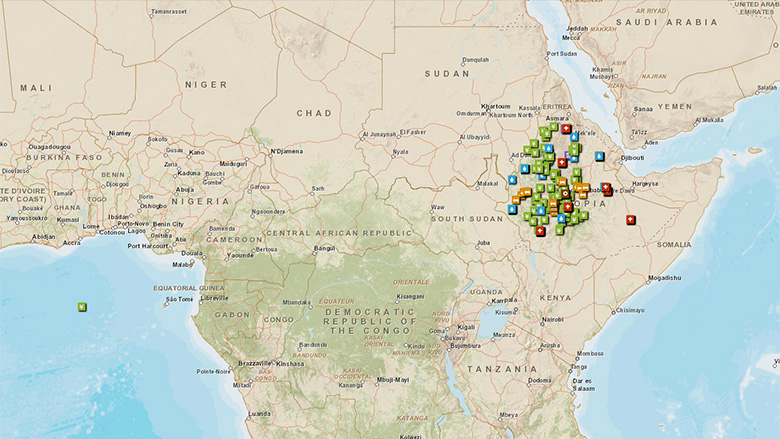Challenge
When the Private Sector Development Capacity Building Project (PSDCB) was being designed in 2003/2004, Ethiopia was in transition from a system in which the state was heavily involved in almost all production and distribution activities. The government was implementing the first generation of reforms necessary to remove the main bottlenecks to private sector development (PSD) and to create pre-conditions for growth with the recognition that the plan should be selective and needs to have a multifaceted approach to PSD in order to:
- improve the investment climate
- increase the pace of implementation of the PSD reform agenda, and
- create an environment that adequately promotes improvements in firms’ skills and productivity.
At a sectoral level, the main challenges were:
- a dominant public sector
- weak integration of the Ethiopian economy into the regional and international economy
- low labor productivity and thus limited capacity of the private sector to compete, and
- weak institutional support for the private sector.
Solution
The project addressed these constraints by:
- helping to accelerate the process of divestiture of public enterprises
- improving the business environment through increasing competition and the contestability of markets and strengthening linkages and integration of the Ethiopian economy into the global markets
- improving access to finance, and
- strengthening support for technical and business management skills to improve the productivity at the firm level.
One of the innovative approaches used was setting up an Ethiopian Competitiveness Facility (ECF) with involvement of experts to share best practice examples of successful matching grants programs to support the private sector. One of the key results of this support was the introduction of a new benchmark program, whereby a comprehensive approach was employed to assist industry actors to enhance performance, in relation to the best manufacturing practices applied worldwide and address some of the issues related to low productivity, quality, volume, and inability to meet delivery time. These practices include factory floor functions such as cutting, stitching, quality control and product development.
Results
- The most significant achievement of the project is the matching grants scheme implemented by the Ethiopian Competitiveness Facility (ECF). This program has been designed to encourage firms to purchase specialized services, such as training for employees, implementation of standards and quality certification, product development and marketing support, and support in technology upgrading, in order to improve the Ethiopian private sector’s international competitiveness. A total of 162 matching grants have been made to private firms for export expansion from 2008 to 2012. As of October 2012, participating firms have increased their value of exports on average by 112 percent versus the target of 25%.
- In the other interventions under the project, there was a 71% increase in the proportion of the total value of assets of state-owned enterprises transferred to private sector management, a 39% increase in the number of private sector jobs created and 51 new business startups were established through business plan competition. Forty-one students graduated in international trade and regulatory economics, a revised competition policy was enacted and an independent competition authority and secretariat was established. Overall, 60.4% of the direct project beneficiaries were women.
Bank Group Contribution
Out of a total project budget of US$26.5 million, IDA financed US$24 million (90.5 percent). A retroactive impact evaluation carried out on the matching grant component shows that the gross annual turnover impact of the Ethiopia Competitiveness Facility (ECF) is estimated at US$35.4 million. This amount translates into a positive net present value (NPV) of US$29.5 million and a benefit to cost ratio of 6.04.
Partners
The project was co-financed by the Government of Ethiopia. The Bank team has worked closely with the U.K. Department for International Development (DFID) to enable continued support to the ECF component after the PSDCB project ends on December 31, 2012. Towards this end, a joint impact evaluation was undertaken for the current ECF scheme in early 2012.
Moving Forward
As mentioned above, the Bank team has worked in close coordination with DFID so that the ECF matching grant schemes can be continued after the closure of the existing PSDCB project. This support would include changes to the existing design to include light manufacturing industries with a view to operationalizing the analytical work undertaken under the World Bank Light Manufacturing in Africa study, which looked at improving productivity in sectors that are competing with imports.
Beneficiaries
Peacock Shoe Factory is one of the firms that benefitted from the benchmarking program through the ECF. Just like most of the leather industry in Ethiopia, the firm focused only on the local market until recently. The company was particularly hit by low-priced, high-volume imports that began to flood the local markets in 2000. Its first year of exports accounted for less than a tenth of its total production. Through the benchmarking program, the firm benefitted from the technical assistance from the Leather Institute in India and has focused on improved quality through better and more advanced machinery, reduced wastage and better disposal of waste, increased durability through strengthening the quality of leather used and better design of their products.

